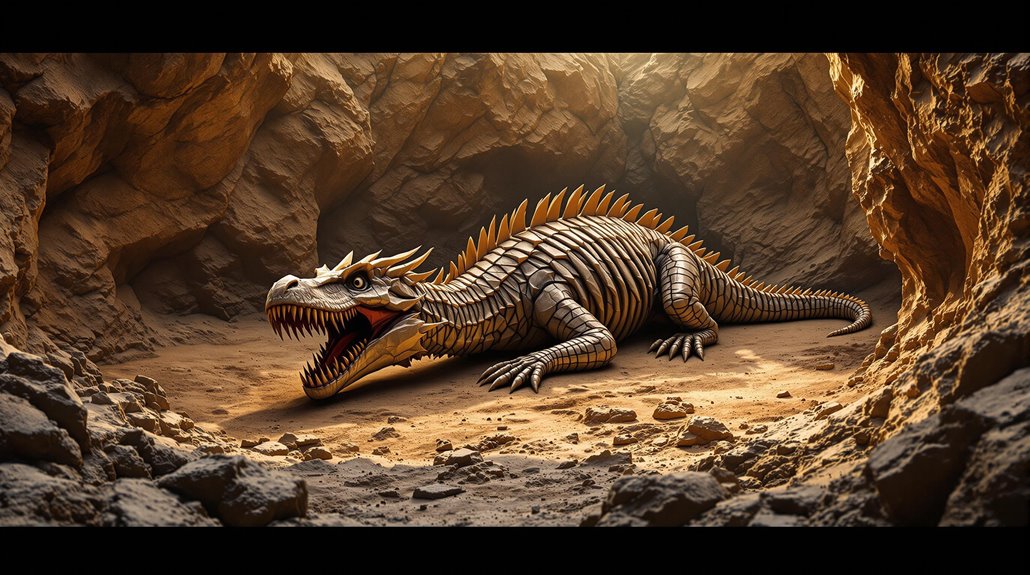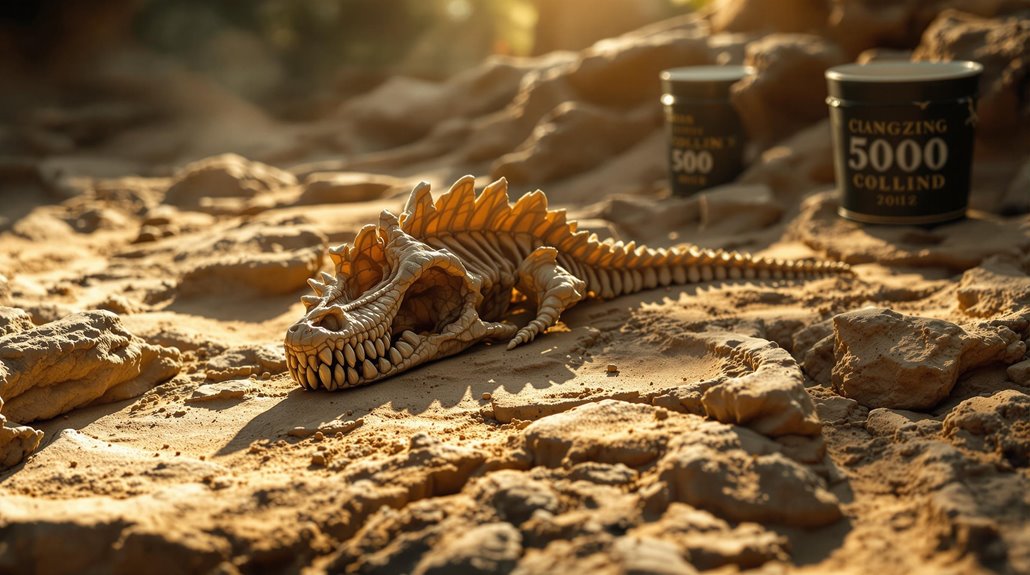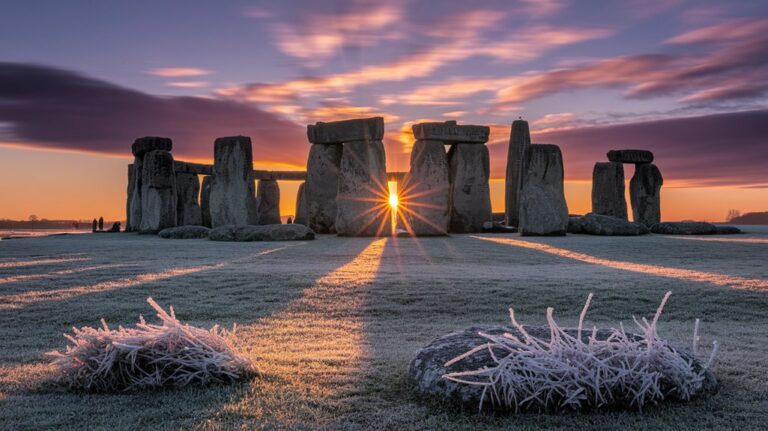Dinosaurs? Early Fossil Explanations Claimed Giants or Dragons
While you might think ancient people were foolish for believing dinosaur fossils belonged to dragons or giants, their interpretations actually made sense given their cultural context. You'll find that across different civilizations, from China to Greece, massive bones led naturally to tales of mythical creatures. These early explanations weren't just flights of fancy—they were serious attempts to understand the mysterious remains that kept turning up in their lands. What's fascinating is how these interpretations shaped human culture for centuries to come.
Ancient Cultures and Their First Fossil Encounters
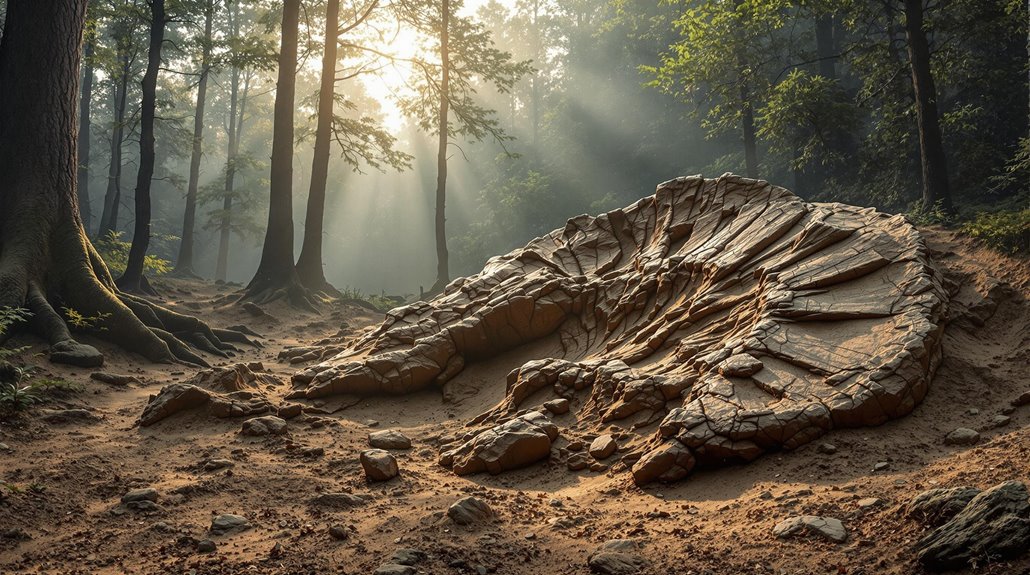
Long before scientists understood fossilized remains, ancient cultures worldwide encountered and interpreted these mysterious remnants of prehistoric life. In Greece and Rome, these findings shaped mythology, while Chinese civilizations believed they'd discovered dragon bones.
Ancient beliefs varied dramatically across continents, yet shared common threads in attributing fossil significance to legendary creatures and ancestral spirits. Natural philosophers began collecting and organizing fossil specimens in the 16th century.
You'll find fascinating examples of how different societies made sense of these discoveries. Native American tribes connected massive bones to water monsters and considered mastodons the ancestors of buffalo. Elephant remains were often mistaken for evidence of one-eyed Cyclopes.
The Chinese incorporated fossils into their traditional medicine, while Greeks and Romans developed elaborate explanations for the giant bones they found.
Even during the Stone Age, humans collected these peculiar specimens, weaving them into their cultural narratives and religious beliefs.
From Dragons to Giants: Early Mythological Interpretations
The human imagination transformed ancient fossil discoveries into a rich tapestry of mythological beings and legendary creatures. You'll find that across cultures, fossil misinterpretations led to tales of dragons, giants, and mythical creatures that shaped early human understanding of these mysterious remains.
When you look at ancient Greek texts, you'll discover they mistook mammoth skulls for Cyclops remains, while Chinese dragon myths likely emerged from sauropod fossil findings.
Even respected scholars made these interpretations – like Johann Scheuchzer, who claimed a giant salamander fossil was evidence of a biblical flood survivor. The Lindwurm statue in Klagenfurt incorporated elements from a woolly rhinoceros skull discovered in 1335, showing how fossils influenced dragon imagery.
Many diverse cultures, from Chinese to Peruvian to North African societies, developed their own dragon legends from fossil discoveries.
Native Americans developed thunderbird legends from local fossil discoveries, while griffins may have originated from Protoceratops remains in the Gobi Desert.
These creative explanations show how early cultures made sense of fossils before modern scientific understanding.
The Shift Toward Scientific Understanding
While ancient cultures viewed fossils through a mythological lens, scientific understanding began to emerge during the Age of Enlightenment.
You'll find that major scientific breakthroughs started with Nikolaus Steno's 1669 demonstration that fossils came from living organisms, not magical origins.
This revelation paved the way for systematic fossil discoveries and research that showed dinosaurs inhabited Earth during the Mesozoic Era, spanning over 165 million years.
Modern research continues to refine our understanding, with discoveries like Pisanosaurus mertii fossils providing crucial insights into early dinosaur evolution.
Groundbreaking Discoveries That Changed History
Since their first scientific descriptions in the 1820s, dinosaur fossil discoveries have revolutionized our understanding of Earth's prehistoric life.
You'll find that while ancient interpretations saw these remains as mythical creatures or giants, breakthrough discoveries disclosed their true fossil significance.
William Buckland's Megalosaurus naming in 1824 and Mary Ann Mantell's Iguanodon find marked the start of scientific dinosaur study.
Recent evidence shows that early dinosaurs existed during a time of wetter climate conditions that transformed desert habitats into more hospitable environments.
The North American "Bone Wars" of the late 1800s disclosed iconic species like Tyrannosaurus and Stegosaurus, dramatically expanding our knowledge. Along the Dakota Hogback in 1876, Arthur Lakes made significant fossil discoveries that led to naming famous dinosaurs like Apatosaurus.
More recent discoveries have transformed our understanding even further.
The 1964 Deinonychus find challenged assumptions about dinosaur behavior, while the 1996 Sinosauropteryx confirmed the presence of feathers in non-avian dinosaurs.
Biblical Perspectives on Prehistoric Remains
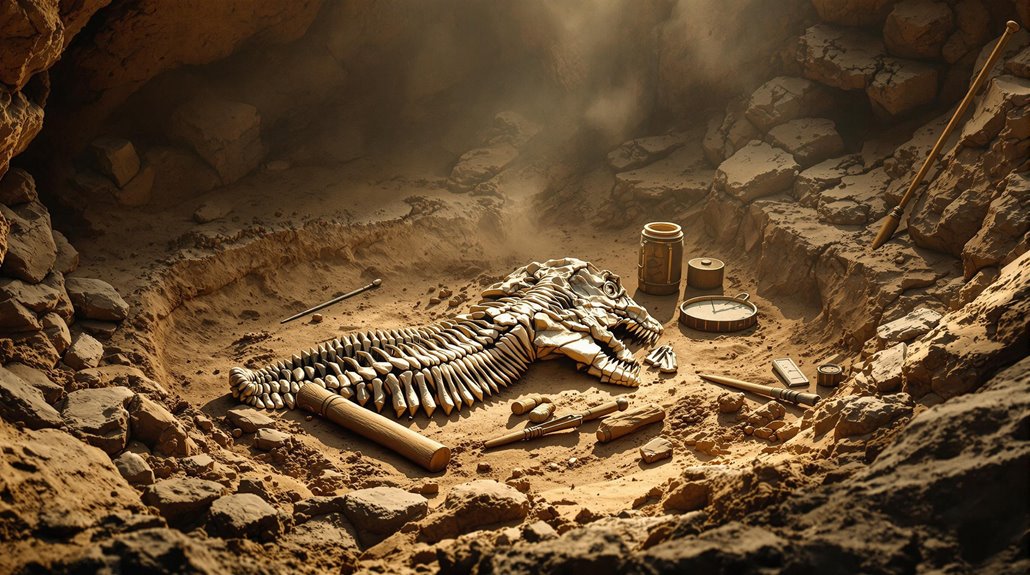
Biblical interpretations offer a distinct lens through which to understand dinosaur fossils, contrasting sharply with conventional scientific dating methods.
From this viewpoint, you'll find that biblical fossils align with creation narratives describing Earth's formation roughly 6,000 years ago, with dinosaurs and humans coexisting during this period. Gideon Mantell's discovery of unusual teeth and bones in a quarry marked the beginning of formal dinosaur studies.
You'll notice how creation narratives explain that all land animals, including dinosaurs, emerged on Day 6 of creation. Learning about these magnificent creatures, like the fierce T. Rex with its powerful jaws, helps demonstrate God's creative power.
This view suggests that most dinosaurs perished during Noah's global flood about 4,500 years ago, while some survived on the Ark before later extinction.
The flood explanation accounts for fossil deposits worldwide, and you'll see how ancient historical references, including Job 40-41, possibly describe dinosaur-like creatures.
Dragon legends across cultures might reflect actual dinosaur encounters.
 shapes from nature.
shapes from nature.
The field gained momentum when Georges Cuvier developed fossil classification techniques in 1812, leading to vertebrate paleontology. Modern research now reveals that early dinosaurs evolved in hot, arid environments of ancient Gondwana.
Richard Owen's 1842 introduction of the term "Dinosauria" further advanced the discipline.
Darwin's revolutionary work in 1859 finally placed fossils within an evolutionary context, transforming them from curiosities into evidence of life's history.

